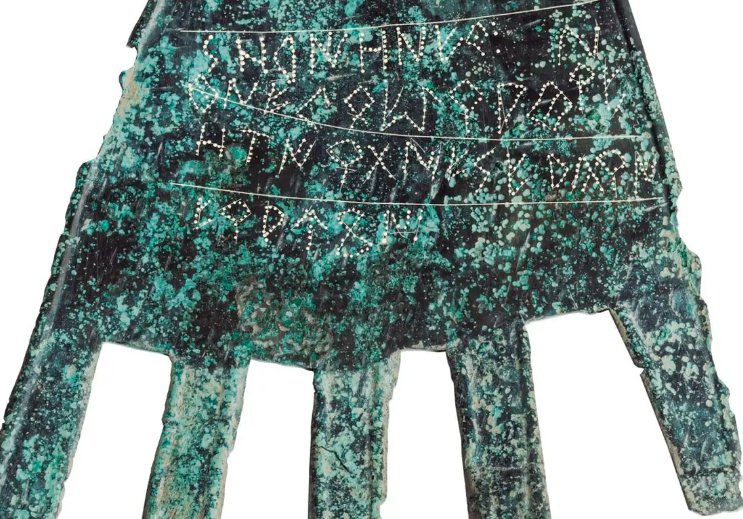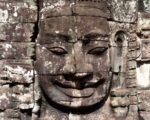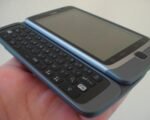A bronze hand-shaped artifact discovered in northern Spain has sparked new interest in the history and origins of the Basque language, one of the most enigmatic languages in Europe. The hand, which dates back to the first century B.C., bears an inscription that resembles the modern Basque language, also known as Euskara.
The Hand of Irulegi: A Unique and Mysterious Find
The artifact, nicknamed the Hand of Irulegi, was found in 2021 during an archaeological excavation at a site near Pamplona, where a settlement existed during the Roman Sertorian Wars. The hand measures about 14 by 15 centimeters and is made of bronze. It was located at the entrance of a domestic building, suggesting that it had a ritual or symbolic function.
The hand was initially covered with dirt and sediment, obscuring its true significance. It was only after a careful restoration process that researchers noticed the lines of text engraved on the surface of the hand. The inscription consists of 18 characters and at least five words, two of which have a striking resemblance to the Basque language.
A Possible Link to the Basque Language
The Basque language is spoken by about 700,000 people in the Basque Country, a region that spans the western Pyrenees and parts of northern Spain and southwestern France. The language is considered an isolate, meaning that it has no known living relatives or ancestors. The origins and evolution of the Basque language are still a mystery, as there are very few written records of its ancient forms.

The inscription on the Hand of Irulegi may offer some clues to the linguistic history of the Basque language. According to a study published in the journal Antiquity, the inscription is written in Vasconic, a language family that includes Basque and was spoken by the pre-Roman Vascones, the inhabitants of the area where the hand was found.
The study, led by Mattin Aiestaran, an archaeologist at the University of the Basque Country, identified two words on the hand that are similar to the Basque words for “fortunate” and “to give”. The researchers suggest that the hand may have been used as a charm or a dedication to a local god or goddess of fortune.
“The hand would’ve had a ritual function, either to attract good luck or as an offering to an Indigenous god or goddess of fortune,” Aiestaran said in a statement, as reported by Live Science.
The researchers also argue that the inscription is the oldest and longest example of Vasconic script to date, and that it shows that the ancient Vascones were familiar with writing. The only other known examples of Vasconic script are a few coins minted in the Vasconic territory.
“The Irulegi hand is the only long written text retrieved to date, alongside several coins minted in the Vasconic territory,” Aiestaran said. “The Irulegi hand must be considered as a well-integrated element within the cultural context of the settlement.”
A Controversial and Inconclusive Discovery
However, not everyone is convinced by the interpretation of the inscription on the Hand of Irulegi. Some linguists who were not involved in the study have expressed doubts about the connection between the Vasconic language of Irulegi and the modern Basque language. They argue that there are not enough words on the hand to draw any definitive conclusions, and that the similarities between the words may be coincidental or the result of different linguistic influences.
One of the main criticisms is that the word on the hand that is supposed to mean “fortunate” does not follow the typical pattern of word evolution in the Basque language. The word on the hand is sorioneku, while the Basque word is zorioneko. The critics point out that the sound change from s to z is very unlikely in the Basque language, and that the word may have a different origin or meaning.
“We are hoping that more inscriptions will appear,” said Céline Mounole, a linguist at the University of Pau who co-wrote a critique of the study’s initial conclusions, to New Scientist. “In this case, we would be able to know more about this language and its possible relation with the Basque language.”
The discovery of the Hand of Irulegi has opened a new horizon to unravel the history behind the most enigmatic language still alive in Europe: the Basque language. However, the inscription on the hand is not enough to solve the mystery, and more research and evidence are needed to confirm or refute the link between the Vasconic language of Irulegi and the modern Basque language.














